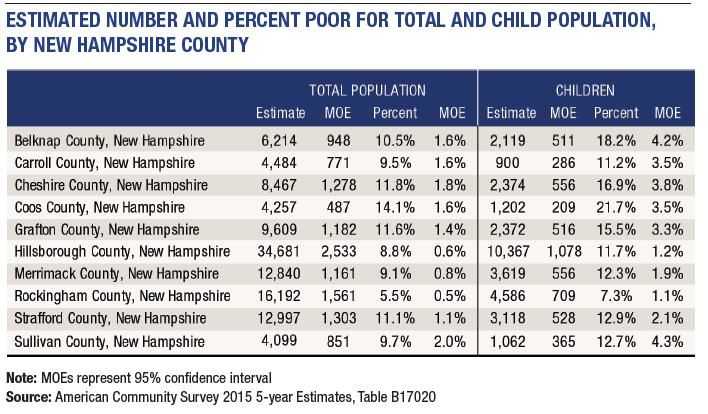download the brief
Key Findings

On October 20, 2017, the U.S. Census Bureau made available estimates of poverty and other indicators for 2016 for small geographic areas. In considering these data from the American Community Survey (ACS), it is important to pay close attention to the margins of error (MOE) before reaching any conclusions—especially when doing comparisons such as comparing poverty rates between counties and years.
The margins of error are quite high for small counties, making those estimates particularly unreliable and imprecise. For example, the recently released data show Coös County with a poverty rate of 11.7 percent, but the associated margin of error of 4.0 percentage points suggests a wide range of probable values (estimated poverty rate between of 7.7 and 15.7 percent). The estimates for child poverty are even more imprecise, due to even larger margins of error with this smaller population. As New Hampshire has small counties generally, county differences in these estimated poverty rates within New Hampshire are not substantially or statistically meaningful.
It is possible to do such comparisons but only by combining multiple years of ACS data to increase the statistical validity of the estimates. In our work, we rely on multi-year data to specifically provide more reliable estimates of poverty for New Hampshire counties. The table below uses the most recent five-year estimates from the ACS (2011–2015). These will be updated in December when the U.S. Census Bureau releases 2012–2016 data.

Partial funding for this analysis provided by the Wellspring Philanthropic Fund.